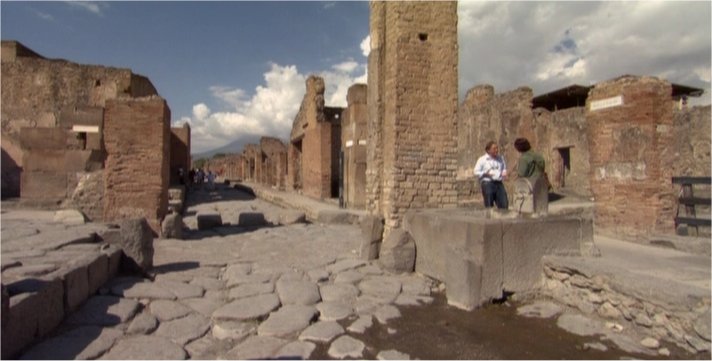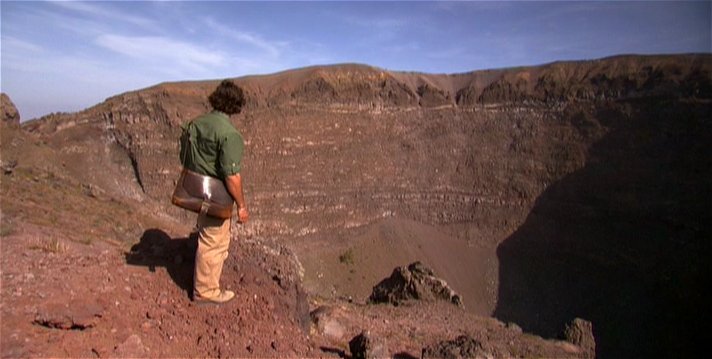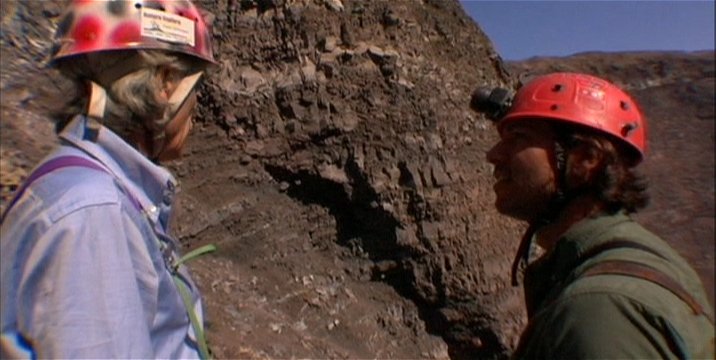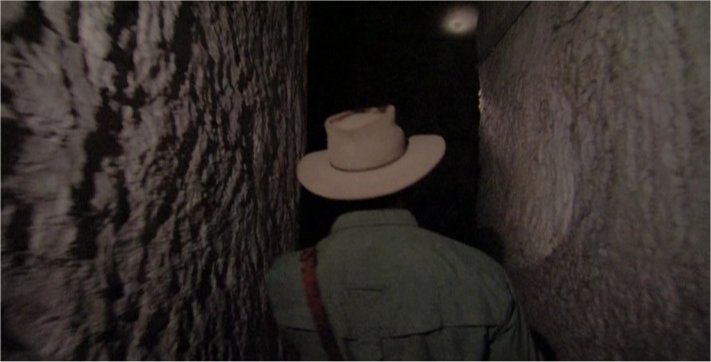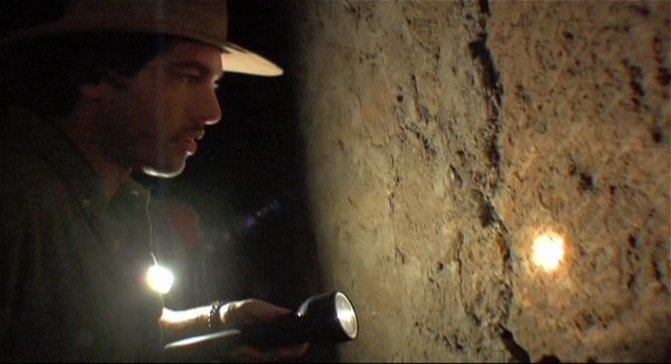Pompeii Secrets Revealed
In 79 AD, the volcano Vesuvius exploded in one of history's deadliest eruptions, burying the city of Pompeii and other Roman towns along the Bay of Naples beneath layers of ash and pumice. Pompeii was rediscovered in the 18th century, but only recently have archaeologists and volcanologists come to understand exactly how the eruption unfolded, and why it took the people of Pompeii almost entirely by surprise.
Josh's Journal
created by diggingforthetruth.net 2008
Journal taken from The History Channel DFT site. Photos taken from The History Channel DFT site and video.
Underground Napoli: "Honestly, I had no idea that Napoli had an underground city below it. There's almost as much space below ground as there is above, with cemeteries, altars, dwelling spaces, cisterns and aqueducts to support people living there. There are even street signs and tours to help you get around! It's all possible thanks to the volcanic tuff (or 'tufo' in Italian) that was used by the people of Napoli to build their homes over the centuries. The more they built above ground, the bigger the labyrinth below. Giuseppe does a great job giving me the tour, although it took me a while to figure out some of what he was saying ('big empty = emptiness and 'built' = buildings)."
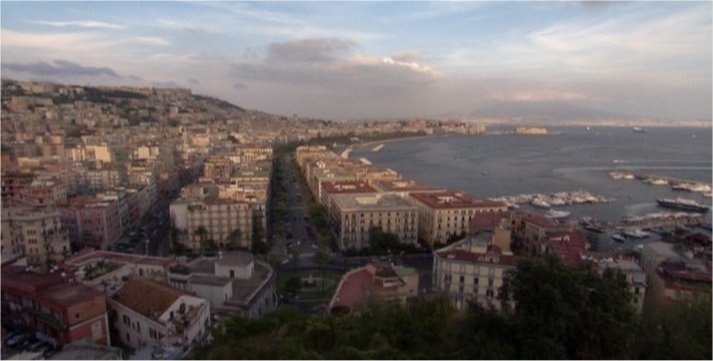
The Phlagrean Fields/Solfatara: "I think the Solfatara volcano is great—smoking, steaming, and smelly. The smell is from the hydrogen sulfide which comes out of the fumaroles at around 320 degrees Fahrenheit (160 degrees Celsius) and smells like rotten eggs. These were called the Forum Vulcani by the Romans, which means 'Home of the God of Fire.' The idea of harnessing the fumaroles and directing that hot gas/air mixture to heat a bath astonishes me. It really does imply a practical, almost comfortable relationship with volcanoes...not what I would expect in a place so close to Vesuvius."

Stromboli: "Stromboli is not an easy trip from Naples. I have to take an overnight ferry (the SS Carpaccio) from Naples to Stromboli, and it only goes a few days each week. What's nice about this, though, is that once I'm on the island, I'm truly stuck here and it forces me to adjust to the slow, laid-back pace of island life. And, like Naples, the food is incredible, with plenty of fresh seafood to complement the pasta. Ah, Italy."
"That said, I'm a bit distracted by the volcano over my shoulder. While I learn that the 'The World's Most Active Volcano' is NOT the world's most dangerous, it's still very sobering to think that at any minute, it could blow up like it did just a few years ago."
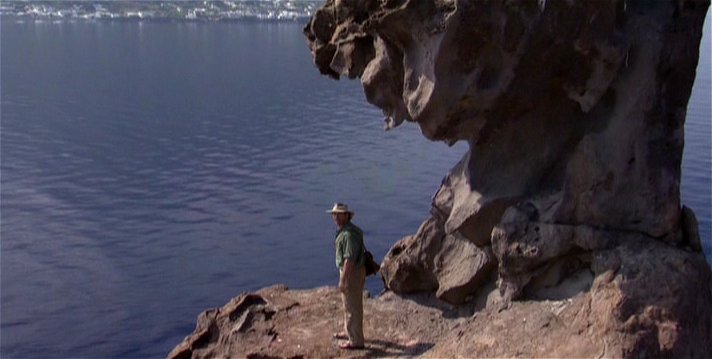
Pliny the Elder: "Pliny the Elder baffles me... Here was a man who wrote 20 volumes on German Wars, 31 volumes on general history, and 37 volumes on nature, rocks, etc, and yet he decided to steer his ship right into an erupting volcano. It really demonstrates how unknown a 'Plinean' eruption was, and how dangerous a pyroclastic column could be. I'm just grateful that his nephew decided to stay behind—without his comments and connections, we wouldn't have the primary eyewitness account of the eruption."
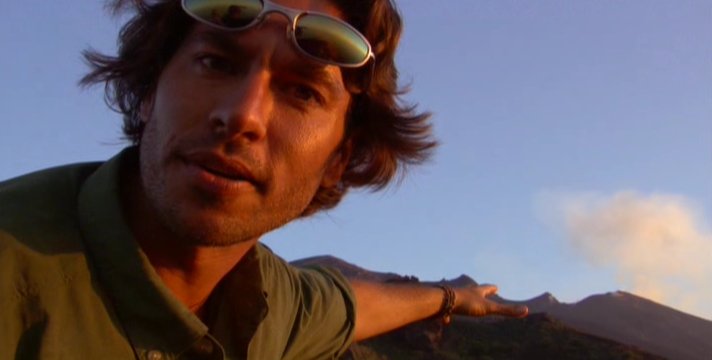
The Bodies at Pompeii: "These forms, these plaster casts of bodies with teeth and bones still in them, are freaky. Honestly, there is a sense of dread, a sense of morbid doom, which screams from their silent bodies. I asked Andrew what a person could do, back then or even today, to avoid a pyroclastic surge. Would a person be safe in a storm shelter? In a submarine? In a special capsule built to withstand the heat, the pressure and the speed of the blast? Andrew's answer: 'You couldn't do anything at all. Just die.'"
"That type of power and finality impressed me. And it made the story of those who stayed in Pompeii that much sadder given the doom they could have avoided by leaving the city."


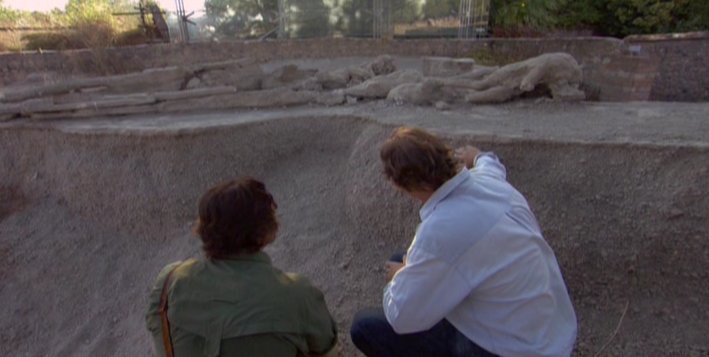
Stromboli's Eruptions: "Or lack thereof, I should say. Okay, so I was a bit disappointed. Lorenzo and I climbed 1300 feet to view Stromboli from as close as one safely can these days, and all we saw was a small spurt of lava. What made it even more frustrating was the night before we went up, Lorenzo said it was super active. Great."
Going into Vesuvius: "In addition to Solfatara, I've been to Hawaii's volcanic fields and even hiked through a crater or two before, but that's not the same as rappelling into Vesuvius, which emits a far more profound sense of massive power. So while I trust Giovanni and the team of climbers and vulcanologists who help me assess the danger level minute-by-minute, it's a bit odd to find myself going INTO Vesuvius. Once I disconnect from the rope, though, it seems pretty safe. And should it decide to go off while I'm in it, I'm sure I wouldn't feel a thing."

"The crater itself is fascinating, and Giovanni explains to me how the different eruptions have produced different layers over the years. Seeing the massive volumes of rock an eruption creates, I now understand how easily a volcano can destroy anything around it. I don't know if I'd want to carry the burden Giovanni and other vulcanologists in Naples share and be responsible for saying when the citizens should or shouldn't evacuate the city. But I certainly feel a healthy respect for the potential within Vesuvius and a sense of compassion for the unsuspecting people of Pompeii."
Pompeii Secrets Revealed
Naples, Italy: "Of all the places I travel for the series, Naples gets the 'Best Food' award. The fresh mozzarella, the pizza, the espresso .... Ah, Italy. I could live here very happily. But then there's Vesuvius, quietly sitting on the horizon. Not sure I want my family, friends and loved ones that close to something so volatile and deadly."
Intrigued, host Josh Bernstein visits the Bay of Naples, and learns the entire area is built on ancient volcanic rock, some of it still steaming. He climbs the world's most active volcano--Stromboli--an island near Sicily, where "fireworks" from the mountain are a nightly entertainment. Back at Pompeii, he searches for clues that might have enlightened the Romans to the growing threat in their midst. And he literally plays with fire as he follows the story right into the heart of Vesuvius.
